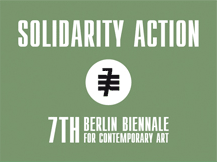Contemporary art could – and should – play an important role in critical cultural production. In other words, it should act as a critical voice within political and social dynamics. I think of contemporary art as an important tool of formation (though formation is a problematic term), because it disrupts various forms of expertise and disciplinary divisions and challenges the usual relationships of power, including relations with administrations and culture.
In Rome, however, this possibility cannot function. The cultural policy of the public administration focuses on the spectacular and communicative dimension of large facilities, like the MAXXI and the Macro or the Auditorium, and this emphasis squashes all the potential independent initiatives, because it absorbs all the funds and because it creates an enormous political weight of tension, of struggle for positions of power inside these large institutions. As far as we can estimate, the directors, curators and people who work inside these big institutions know very well that their margins of independence are extremely limited. It might seem like contemporary art is taking on growing importance in the city. Actually those who work in Rome find themselves in greater difficulty than before: the situation has worsened thanks to the existence of the Macro or the MAXXI or the things done at the Auditorium, which have further reduced spaces of autonomy. Clearly small groups of activities do exist, and every so often they come alive, and perhaps the occupation of Teatro Valle – in some ways – represents the most interesting, most constructive proposal, and also the least costly of them all. But by now, as they say in Italian, la frittata è fatta – the damage is done: it is very hard to go back, though Rome is full of spaces the city government could have renovated and financed for a much lower investment. On this subject Fausto Delle Chiaie comes to mind, an artist who shows his work every day in the street and has a constant, numerous following, very interested in his work and his outdoor museum. He has a curatorial, critical vision no other museum can boast of, his work is very interesting and that museum costs nothing! An excellent example of how you can do extremely interesting things at a very low cost. A wise, farsighted public administration should have the vision to make use of things that already exist, not creating new, very bulky and useless ones. I would add that in recent years the contemporary art scene in Rome has undoubtedly seen a multiplication of interest on the part of a generation (relatively grown-up, at this point) that began its training in the 2000s, and is now doing lots of stuff; I am thinking of Nero, Ilaria Gianni, Cecilia Canziani, who run the Nomas, and the very many people who in recent years have worked on and done outstanding things. Though I also have the impression that these initiatives run the risk of being sown on rather unfertile ground, is the presence of the big institutions does not extend its field of operation to the diffused city.
CESARE PIETROIUSTI
Artist. Lives and works in Rome.


